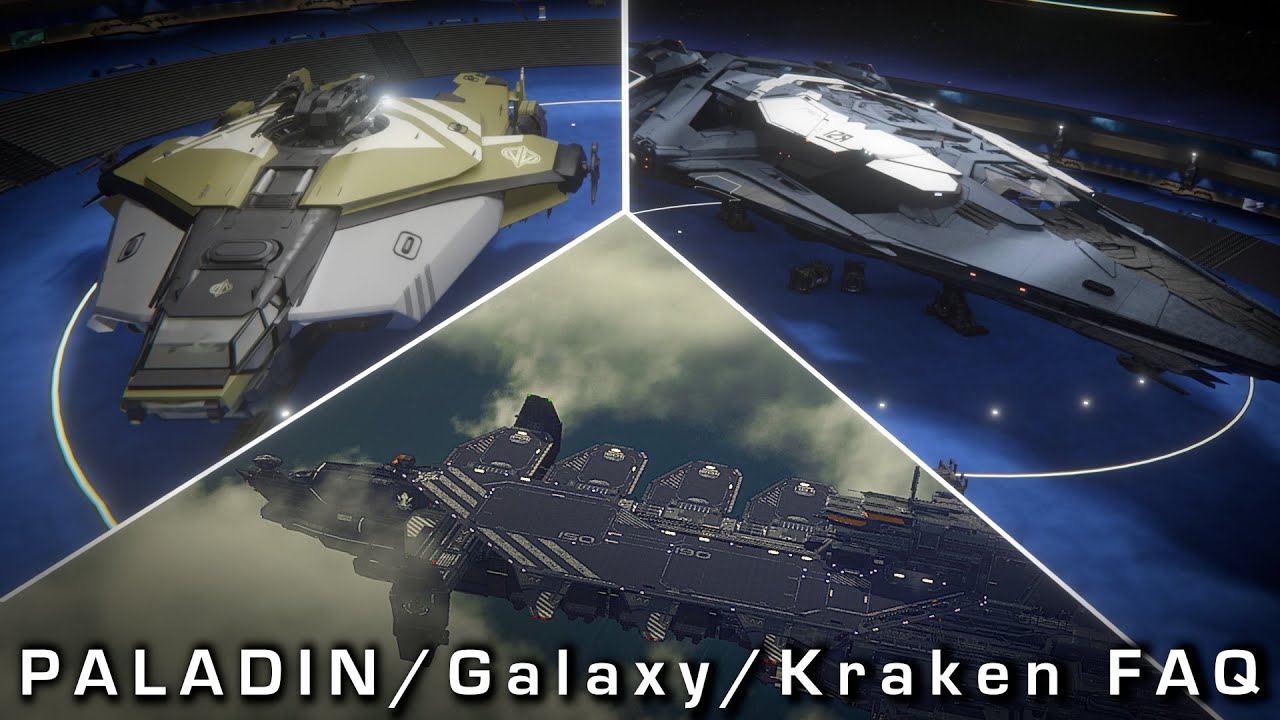In this video, tristPWN answers common questions about the Galaxy, Paladin, and Kraken ships, clarifying their design limitations, cargo capacities, paint options, and shared assets to provide insight into their development. He also addresses why he doesn’t work for Cloud Imperium Games, emphasizing the difference between his speculative hobby models and professional game-ready assets, while urging appreciation for the developers’ dedication and the complexity involved in creating these ships.
In this video, tristPWN addresses frequently asked questions from his ship tour videos on the Invictus ships: the Galaxy, Paladin, and Kraken. Starting with the Galaxy, he clarifies that most fighters, especially larger ones like the F7 Hornet and F8, do not fit inside its hangar due to size constraints based on the original blueprint. The only fighter with a realistic chance of fitting is the Arrow, thanks to its foldable wings. He also discusses cargo fitting, mentioning that while some smaller vehicles like the Storm might fit sideways, larger tanks such as the Nova do not fit well. Regarding the lack of a rear ramp on the Galaxy, tristPWN explains it’s due to the ship’s height off the ground and design intentions—it’s meant as a small hangar for support craft, not a carrier for ground vehicles.
Moving on to the Galaxy’s paint options, tristPWN expects a variety of role-specific liveries, such as medical-themed white and red, cargo-related designs, industrial colors, luxury finishes, and possibly darker, pirate-style paints. Shifting focus to the Paladin, he answers questions about what can fit through its door, suggesting that pulse spikes and one SCU crate might fit, though larger cargo like rates could be a tight squeeze. He also addresses the seemingly empty starboard room, suggesting it serves as a bathroom or crew quarters, essential for the ship’s design. Regarding windows, the Paladin has none except in the cockpit, fitting its submarine-inspired interior design.
For the Kraken, tristPWN discusses how much it shares with the Ironclad, noting that while major components like engines might differ due to scale and design, many smaller assets such as corridors, doors, floor panels, and handrails are shared. This asset sharing likely aids development efficiency, especially with procedural systems for repetitive elements like ladders and handrails. The bridge sections of both ships might be very similar or even the same, further streamlining development. However, the biggest time savings come from these smaller, modular assets rather than major ship components.
A recurring and sensitive topic tristPWN addresses is the common viewer comment asking why he doesn’t work for Cloud Imperium Games (CIG) given his detailed ship reconstructions. He explains that while he has relevant professional experience, his 3D work on these videos is more speculative and less optimized than what is required for game development. His models are not built to run efficiently in a game engine and lack the necessary polygon budgets, texture optimizations, and performance considerations. He emphasizes that his hobby allows more freedom and less constraint than professional game asset creation, which must meet strict technical and performance standards.
In conclusion, tristPWN stresses that despite frustrations some fans have with Star Citizen’s development pace, the artists and developers put immense effort and passion into creating these ships. He urges viewers to appreciate the complexity and technical challenges involved in game asset creation, which justify the time taken to develop these ships. While acknowledging development issues like project delays or feature changes, he defends the quality and dedication behind the ship designs specifically. He thanks viewers for their support and encourages them to continue exploring the Star Citizen universe.
